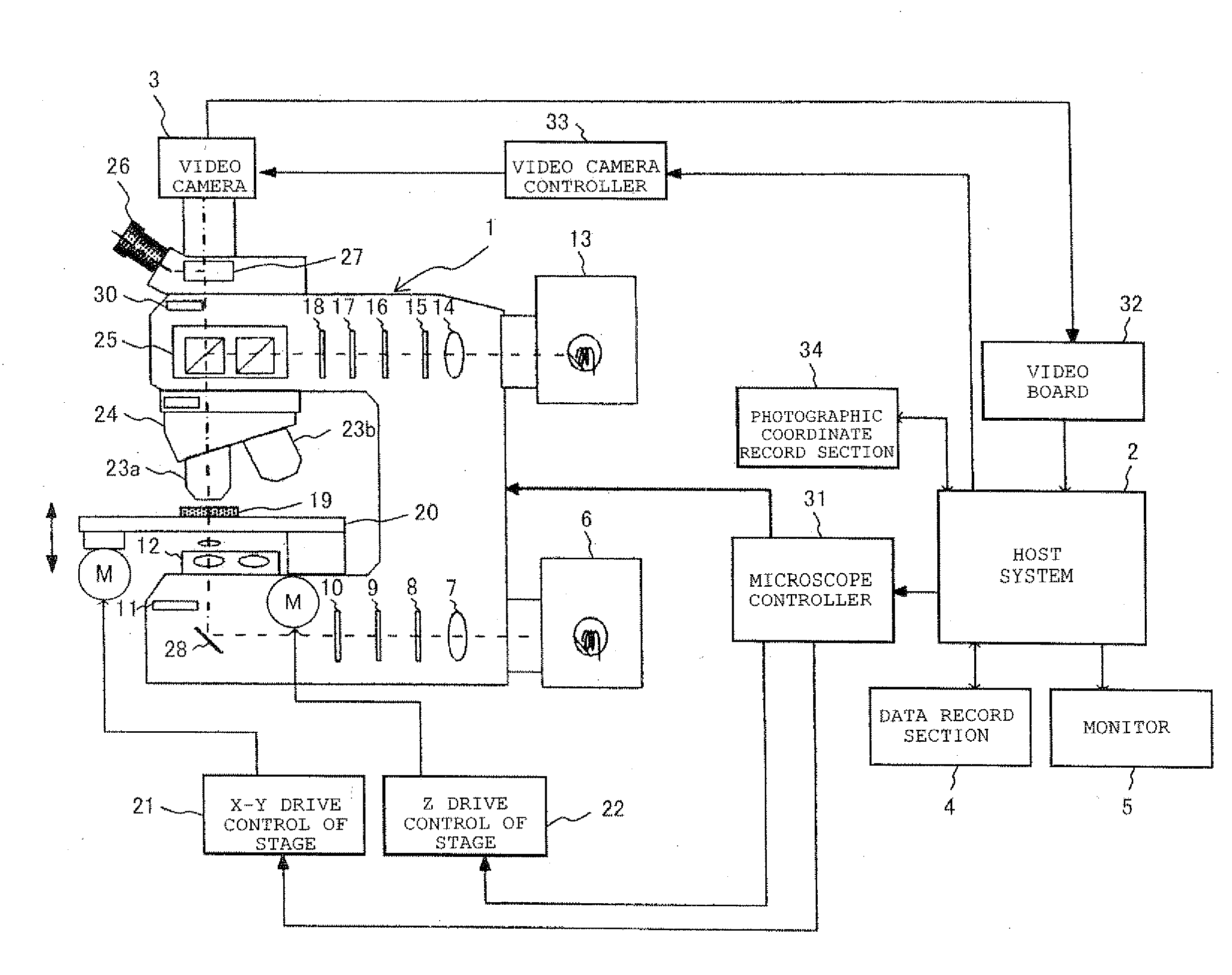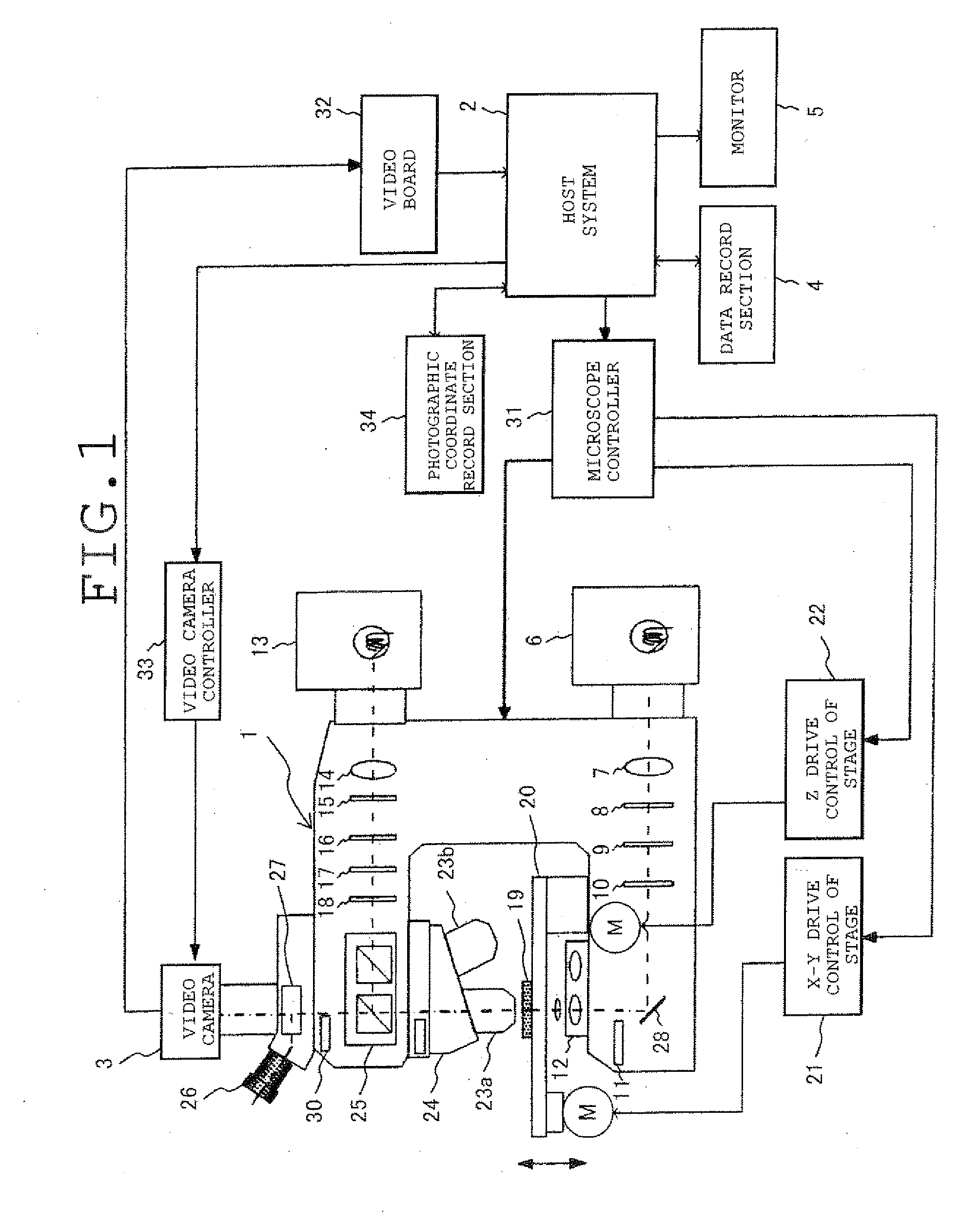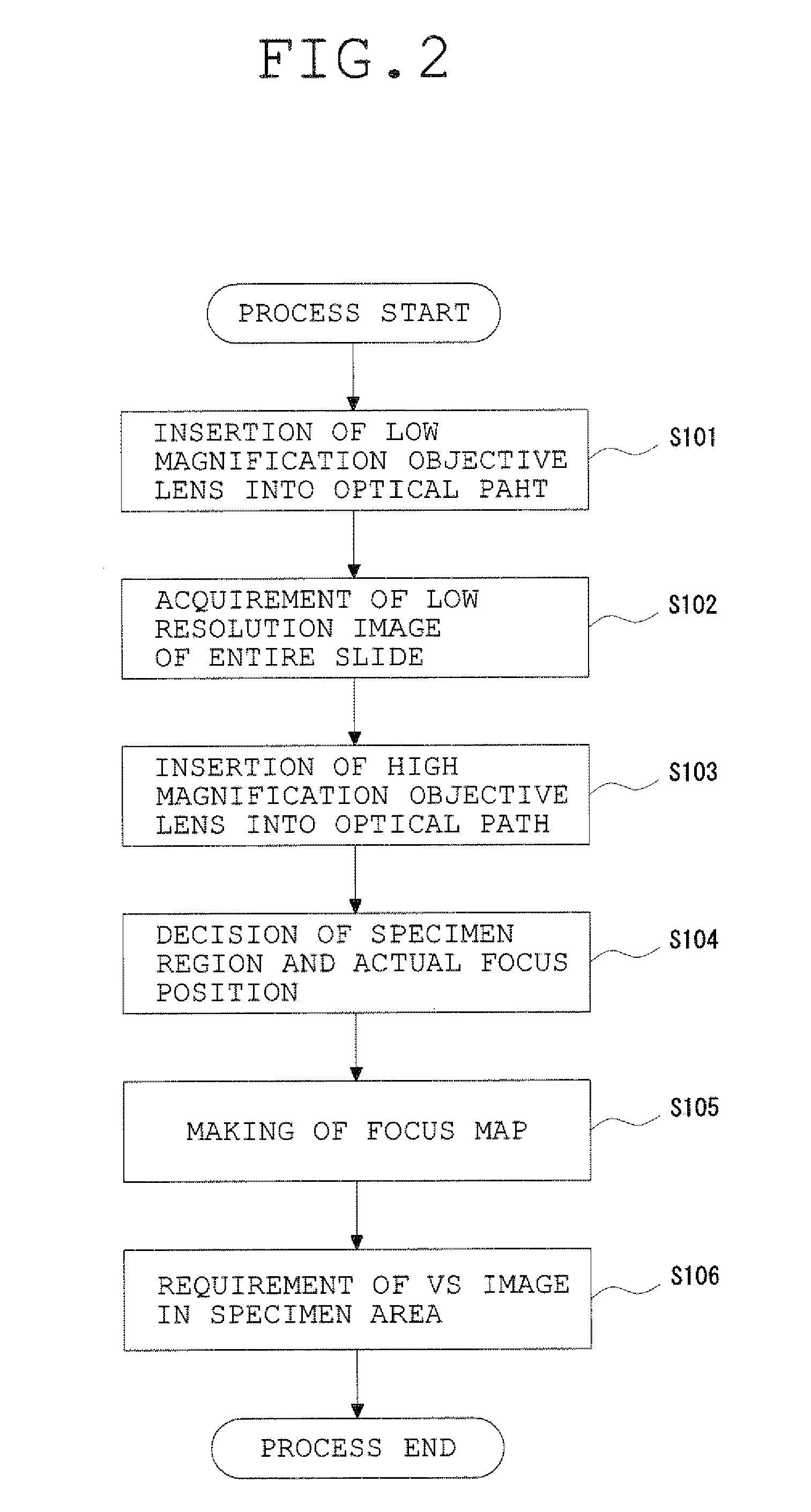Microscope System, Image Generating Method, and Program for Practising the Same
a microscope and image generating technology, applied in the field of microscope technology, can solve the problems of variation in examination accuracy, laborious work to screen a large number of malignant cells, etc., and achieve the effect of improving accuracy and efficiency of cytologic examination
- Summary
- Abstract
- Description
- Claims
- Application Information
AI Technical Summary
Benefits of technology
Problems solved by technology
Method used
Image
Examples
embodiment 1
Generation of Entire Specimen VS Image
[0080]FIG. 2 is a flow chart showing the details of generation processing of the entire specimen VS image. FIG. 3 shows an example of a slide glass specimen (where the specimen 19 is placed on a slide glass 40). Also, although only the specimen 19 is shown in FIG. 1, the slide glass specimen is actually set on the motorized stage 20. FIG. 4 shows a state where the image of the entire specimen region is divided into a large number of small sections in order to produce a focus map. FIG. 5 shows an example of the data structure of the focus map.
[0081]In accordance with the flow chart of FIG. 2, the details of generation processing of the entire specimen VS image will be explained. First, in Step S101 of FIG. 2, in order to control the revolver 24 and confirm the presence of the specimen 19, a process that, for example, the objective lens 23 with 40× magnification is introduced into the optical path is executed. Next, in Step S102, a preset specimen...
embodiment 2
[0188]This embodiment treats the abnormality determination processing of Steps S185 and S186 in FIG. 11, in Embodiment 1, as a primary determination processing of normality / abnormality of the cell region 120. Following this abnormality determination processing, a secondary determination processing of normality / abnormality of the cell region 120 described below is performed and thereby an attempt is made to improve the determination accuracy of normality / abnormality of the cell region 120.
[0189]In the secondary determination processing, the objective lens 23 with higher magnification than that used in generating the entire specimen VS image is used, and a determination is three-dimensionally made as to whether the cell region 120 extracted by the process of Step S122 of FIG. 7 has an abnormal cell. In the following, the secondary determination processing is described with reference to FIGS. 16A-16D. FIG. 16A is a schematic view showing a state where cells overlap in the specimen 19. ...
embodiment 3
[0200]The present embodiment is designed to reduce photographing time and image capacity, etc. by stopping the photographing of sectioning image in a different focal position used a higher-magnification objective lens and the generation of the three-dimensional VS image, with respect to the cell able to determine whether it is normal or abnormal from the VS image of the entire specimen generated from the microscope images photographed by using a common objective lens. The present embodiment is described below by using FIGS. 17A to 17C and 18.
[0201]FIG. 17A is a view showing an example of an abnormality determination table of isolated and scattered cells in which the determination on the need for a detailed image is also possible. FIG. 17B is a view showing an example of an abnormality determination table of the cell mass in which the determination on the need for a detail image is also possible. The abnormality determination table shown in FIGS. 17A and 17B is designed so as to be a...
PUM
 Login to View More
Login to View More Abstract
Description
Claims
Application Information
 Login to View More
Login to View More - R&D
- Intellectual Property
- Life Sciences
- Materials
- Tech Scout
- Unparalleled Data Quality
- Higher Quality Content
- 60% Fewer Hallucinations
Browse by: Latest US Patents, China's latest patents, Technical Efficacy Thesaurus, Application Domain, Technology Topic, Popular Technical Reports.
© 2025 PatSnap. All rights reserved.Legal|Privacy policy|Modern Slavery Act Transparency Statement|Sitemap|About US| Contact US: help@patsnap.com



